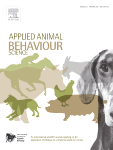Document type: scientific review published in the Journal of Dairy Science
Authors: Annabelle animal welfarever, Kathryn L. Proudfoot, Marina A.G. von Keyserlingk
Preview: Many contemporary dairy cattle housing practices are at odds with societal perceptions of positive animal welfare. The public (i.e., those external to the dairy industry) typically emphasizes the importance of naturalness for dairy cattle, such as through provision of pasture, freedom of movement, and the ability to interact socially with conspecifics. Yet, in the United States, the majority of lactating dairy cattle are reportedly housed without any access to pasture, and almost 39% of dairy farms use tiestalls, which restrict movement and social interactions. In addition to being in conflict with public expectations, a lack of pasture access and restrictive housing systems are also in conflict with the animals' own motivations, which can adversely affect their welfare. For example, dairy cattle are highly motivated to access pasture and show a reduction in oral stereotypies when allowed on pasture after periods of tethering. Calves housed without social contact have cognitive deficits and exhibit increased fear responses to novelty. We argue that the long-term sustainability of the dairy industry will depend on the extent to which housing systems reflect public concerns and the animals' priorities. The adoption of technologies, such as automated feeders and remote monitoring systems, may represent a means to practically promote the animals' natural behavior while simultaneously improving individualized care. Although older generations of the public may consider technological solutions to be a further deviation from naturalness and a departure from dairy farming's agrarian roots, the definition of "naturalness" for younger generations may well have expanded to include technology. As the buying power shifts to these younger generations, the adoption of technologies that promote natural cattle behaviors may be one means toward reconciling the disconnect between public perceptions of animal welfare and contemporary dairy farming practices.






